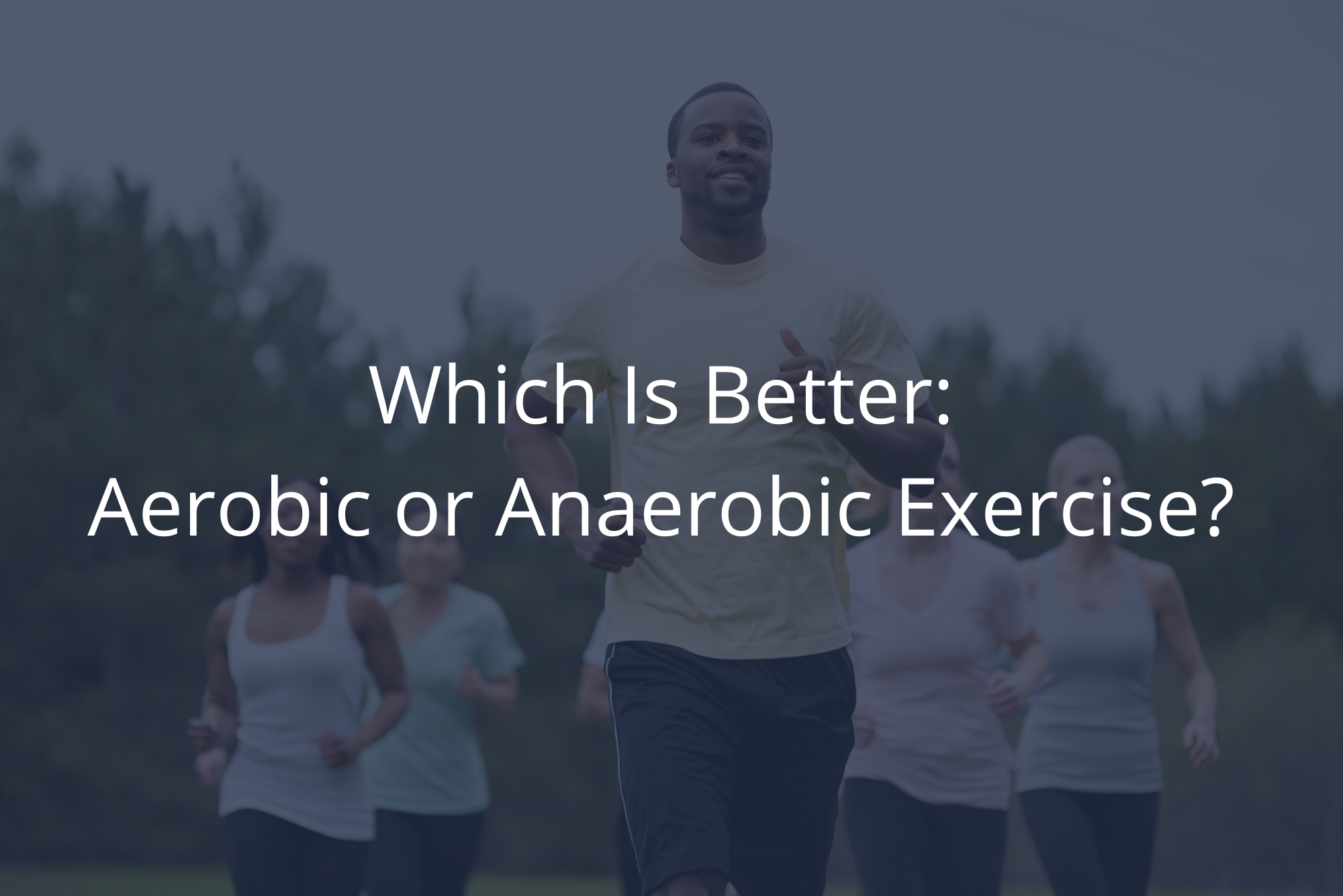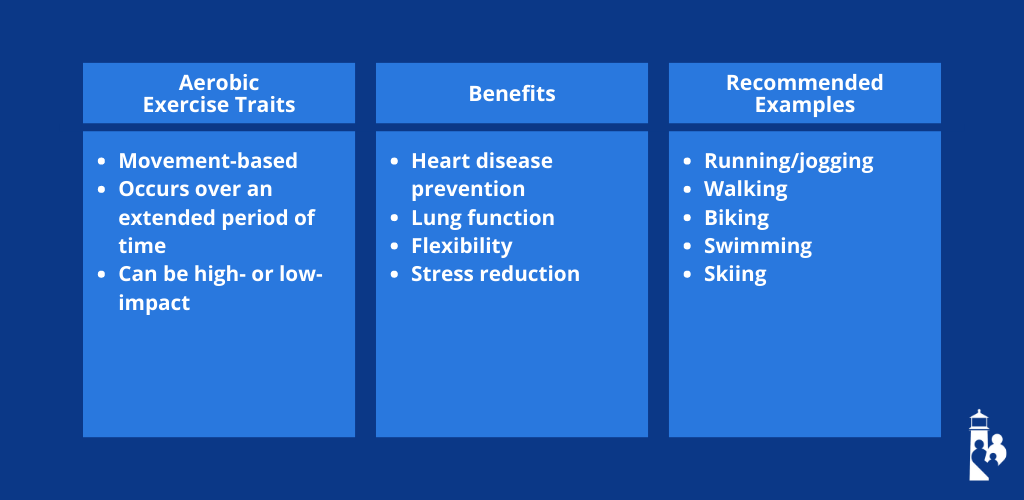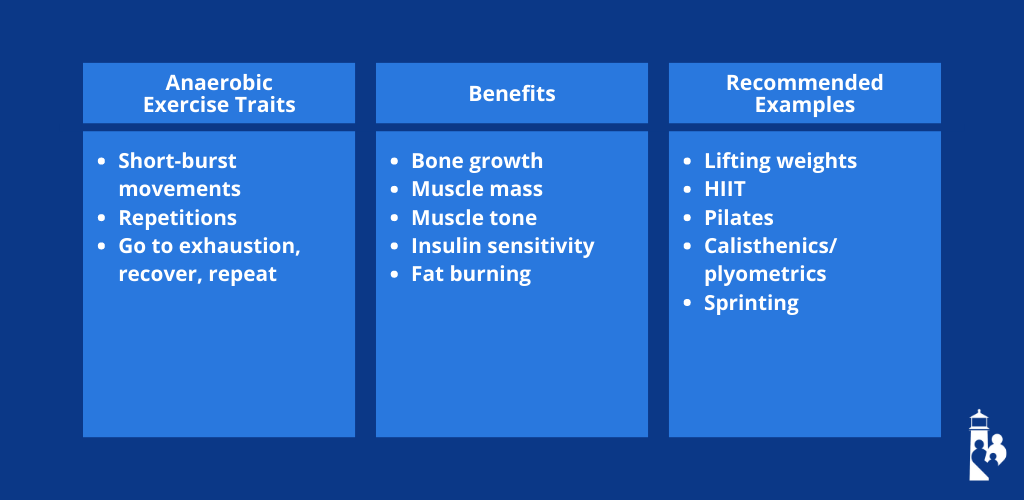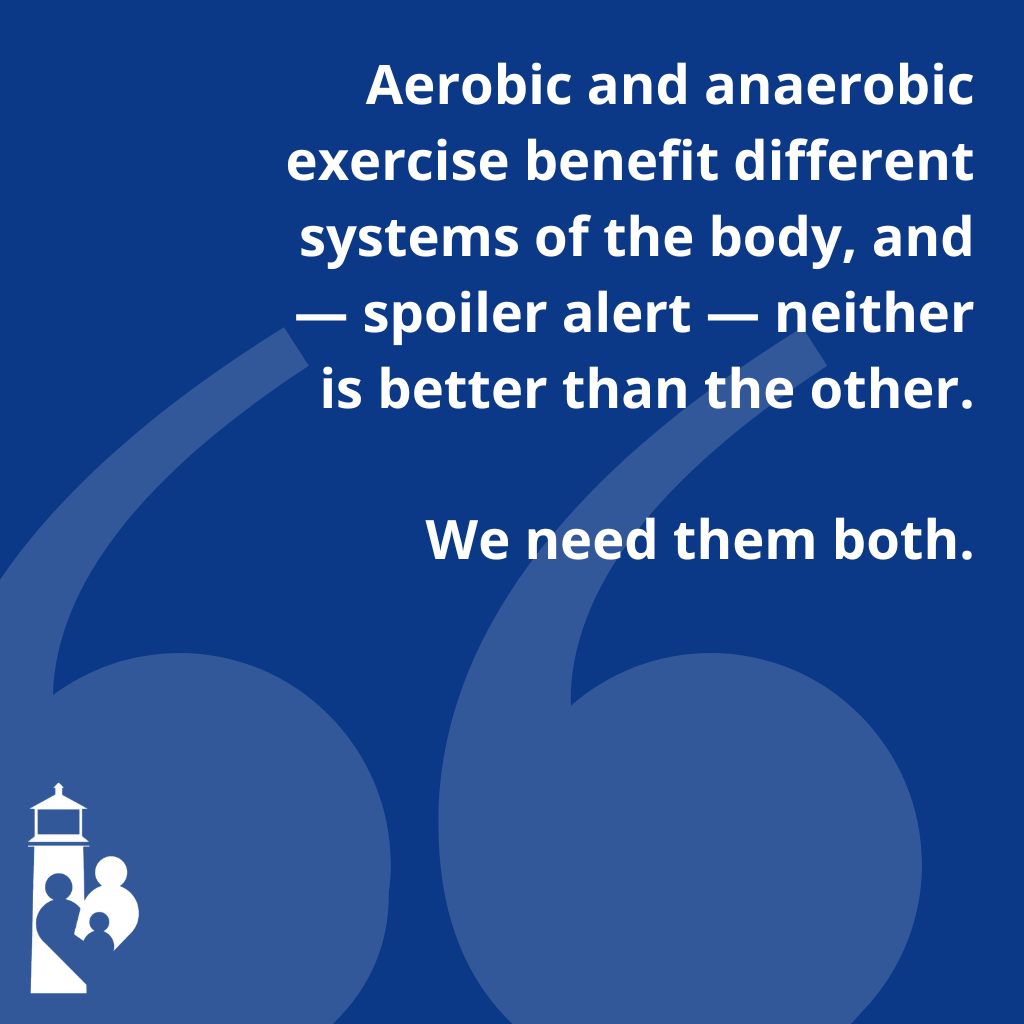
Most of humankind knows exercise is a critical component of overall health, and I’m sure you do, too.
I — and countless physicians across space and time — have touted the benefits of exercise to readers and patients. As one of the four pillars of health, along with sleep, nutrition, and stress elimination, exercise helps with all areas of your well-being.
Virtually every medical condition you can think of — obesity, poor mood, low energy, sleep issues, spiritual angst, social challenges, heart disease, cancer, stroke, dementia (to name a few) — can be benefited and/or staved off by appropriate exercise.
While most of us know exercise in itself is important, many remain in doubt about what type of exercise they need. To pick the right exercise for you, it’s important to understand the two main categories of exercise: aerobic and anaerobic.
These two types of exercise benefit different systems of the body, and — spoiler alert — neither is better than the other. We need them both.
Let’s take a look at why, and what that means for your exercise routine.
Aerobic vs. Anaerobic Exercise
Aerobic Exercise
Because the term aerobic means “only living in the presence of oxygen,” we can understand that aerobic exercise is cardiopulmonary in nature. It’s exercise that’s related to oxygen, that excites the heart and lungs. Examples of aerobic exercise include running, brisk walking, biking, swimming, and skiing.
As you can see, aerobic exercise involves lots of movement. That movement takes place over a continuous and extended period of time, getting the blood pumping and the lungs working. In this way, movement is medicine. It conditions the heart and lungs, bringing them up to optimal functioning. As a result, aerobic exercise increases longevity.
In addition to cardiovascular conditioning and lung functioning, aerobic exercise increases physical flexibility and is a powerful stress reduction tactic.
It’s worth noting, too, that aerobic exercise can come in high- or low-impact forms. Aerobics classes at the gym, full of bouncing and jumping, are high-impact sessions and may not be appropriate for all bodies. Swimming, on the other hand, provides natural cushioning to the joints and is therefore considered low-impact exercise.
Don’t confuse these terms with the impact these forms of exercise have on your health, however. Swimming — low-impact though it may be — can have a profound beneficial impact on your cardiovascular health.

Anaerobic Exercise
As you may remember from grammar school, the prefixes –a and –an can mean not or without. Thus, anaerobic exercise is exercise that does not require your body to use oxygen in the same way aerobic exercise does.
Instead of relying on oxygen to fuel a workout, anaerobic exercise mines existing stored energy. The glucose that’s already in your muscles sustains you during anaerobic exercise.
Anaerobic exercise involves rapid, short-burst movements. These bursts take the muscle to the point of exhaustion, after which it rebuilds and gets bigger. If an exercise involves reps, for example, it’s likely anaerobic. Think weight lifting, high-intensity interval training (HIIT), and Pilates.
The benefits of anaerobic exercise are many. It stimulates bone growth, helping to prevent osteoporosis. It’s also important for increasing muscles mass and tone, preventing insulin resistance, and burning fat.

Aerobic + Anaerobic Exercise
Although distinguishing aerobic and anaerobic exercise from each other is meaningful, it’s not meant to pit one against the other. Both are vitally important.
Combining aerobic and anaerobic exercises gives you stronger overall health than either on its own. They contribute to each other’s success. Building cardiovascular health can help your anaerobic workouts, and building muscle mass and tone can augment your aerobic workouts.
It can be tough to stick to an exercise routine, so including both aerobic and anaerobic activities can help you stay on track. For one thing, the variation of activity can keep you from getting bored.
For another thing, aerobic and anaerobic exercises have their own time component. It can take two hours per week of aerobic exercise before you start seeing the benefits. Anaerobic exercise takes less time to feel and see results — about 20 minutes per day, three times per week.
To incorporate both types of exercise, you might warm up for your workout on the treadmill before moving on to weight lifting. Or, to combine aerobic and anaerobic forms more closely, you might practice one of the many forms of cross-training that’s popular today.
If you know you prefer one form over the other, or you’re more interested in one form’s benefits over the other’s, allot more of your time toward that form of exercise. Just don’t neglect the other completely, or your fitness will become lopsided.

Conclusion
If you’re motivated to begin a new stage of fitness in your life, that’s wonderful! It’s one of the most important moves you can make for your health.
To help you start off on the right foot, I’ll share a few recommendations:
- Talk to your doctor. As you partner in health, your physician can help you identify goals and the type of activity that makes sense for your body. Should you do high- or low-impact cardio? Pilates or HIIT? It’s also a good idea to have a physical exam to make sure there aren’t any reasons to avoid certain activities.
- Get instructions from someone who knows. Don’t jump into exercise without some guidance. This will help you not injure yourself, and will ensure you’re getting all the benefits you can.
- Don’t overdo it. Life is a marathon, not a sprint. Start at a reasonable, sustainable pace for where you are in your physical health and fitness.
- Do things you enjoy. This speaks for itself. Exercise is taking care of yourself; it’s not a punishment. If you force yourself into activities you hate, the likelihood of a sustained endeavor is low.
- Get social. Whether you’re exercising by yourself, with a coach, or in a group, incorporate your workouts into a social setting. Go with a friend or your partner. Some accountability and socialization will help you stick with your exercise — and make it more enjoyable.
- Begin with the end in mind. Know your exercise goals. What do you want to get out of this? Do you want to be able to play with your grandkids? Do you want to live to see your grandchildren graduate from high school? Do you want to be 80 and active? Attaching tangible outcomes to your exercise helps make the results meaningful and motivational.

Dr. David Rosenberg
Dr. Rosenberg is a board-certified Family Physician. He received his medical degree from the University of Miami in 1988 and completed his residency in Family Medicine at The Washington Hospital in Washington, Pennsylvania in 1991. After practicing Emergency Medicine at Palm Beach Gardens Medical Center for two years, he started private practice in Jupiter, in 1993. He is an avid baseball fan and Beatles fanatic, since he was 8 years old. He has been married to his wife, Mary, since 1985 and has three grown children.
David completed additional studies at Mercer University, Macon, Georgia and obtained a BS in Chemistry in 1983.
“My interests include tennis, snow skiing, Pilates and self-development.”
